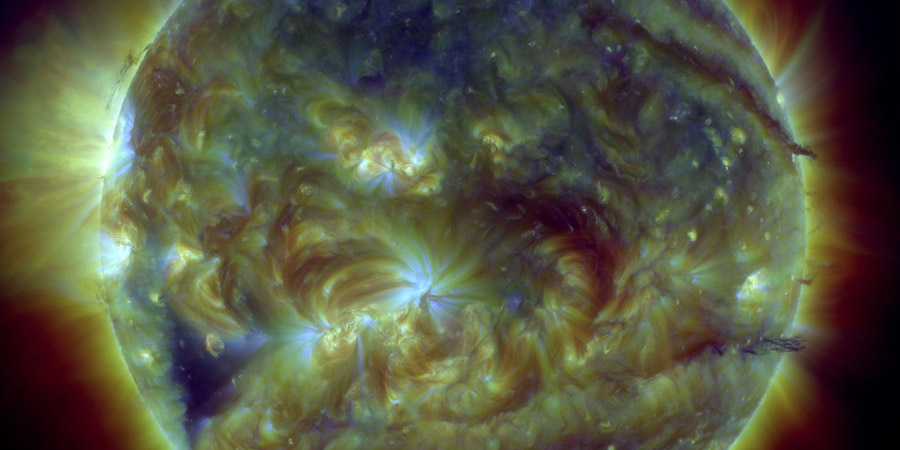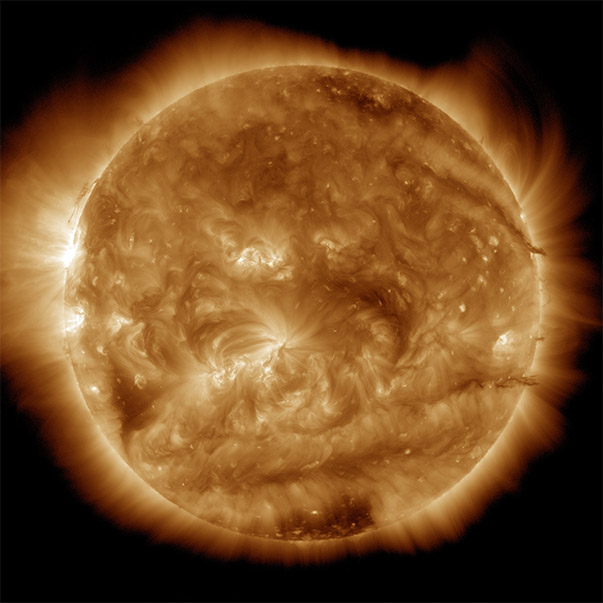Quiet times
Monday, 1 June 2015 12:02 UTC

Welcome to the month of June! It has been a little while since we last posted an update, and for that you will have to blame our Sun.
While the month of May started with a bang (X2.7 solar flare on 5th of May) the rest of the month was not all too spectaculair if you compare it with the first four months of this year. Especially during the second half of the previous month things went very quiet on our nearest star with very little sunspots on the earth-facing solar disk and even C-class solar flares were a rare sight.
Summer is also just around the corner for our visitors from the northern hemisphere and that means that aurora season is ending for most high latitude sky watchers in Europe, Canada and Alaska as the midnight sun is winning terrain there but for our friends in the southern hemisphere (hello Australia and New Zealand!) we are of course hoping that the Sun get's it's act together and starts to throw some solar plasma our way as their nights grow longer and longer as they approach winter.
If we take a look at our Sun right now we have to conclude that it does not look like we can expect an uptick any time soon. There are four numbered sunspot regions on the earth-facing disk right now but two of which look like they already went spotless. The two remaining regions are small and have a simple magnetic layout and even a C-class solar flare would be a noteworthy event from these tiny regions. How about coronal holes you ask? Bad news here as well as there are no coronal holes facing Earth right now. It looks very likely that the solar activity remains very low in the foreseeable future.

Image: no coronal holes are facing Earth right now as can be seen on this image from NASA SDO.
This of course brings up a burning question... could this be a sign that we now really are on our way to solar minimum? Leave your thoughts below!
Thank you for reading this article! Did you have any trouble with the technical terms used in this article? Our help section is the place to be where you can find in-depth articles, a FAQ and a list with common abbreviations. Still puzzled? Just post on our forum where we will help you the best we can!
Latest news
Latest forum messages
Support SpaceWeatherLive.com!
A lot of people come to SpaceWeatherLive to follow the Sun's activity or if there is aurora to be seen, but with more traffic comes higher server costs. Consider a donation if you enjoy SpaceWeatherLive so we can keep the website online!

Space weather facts
| Last X-flare | 2024/03/28 | X1.1 |
| Last M-flare | 2024/04/29 | M3.6 |
| Last geomagnetic storm | 2024/04/26 | Kp5+ (G1) |
| Spotless days | |
|---|---|
| Last spotless day | 2022/06/08 |
| Monthly mean Sunspot Number | |
|---|---|
| March 2024 | 104.9 -19.8 |
| Last 30 days | 139 +32.6 |


